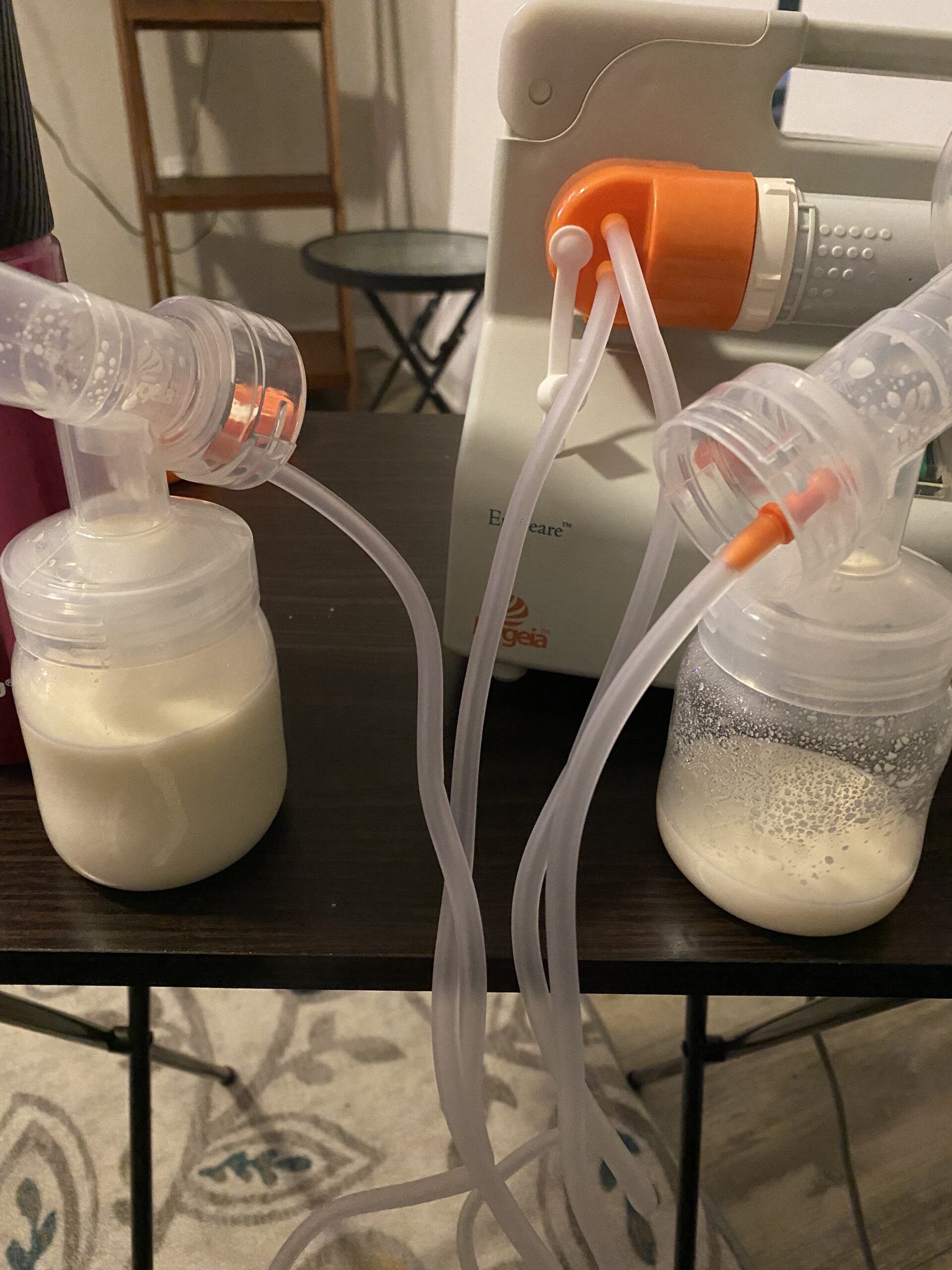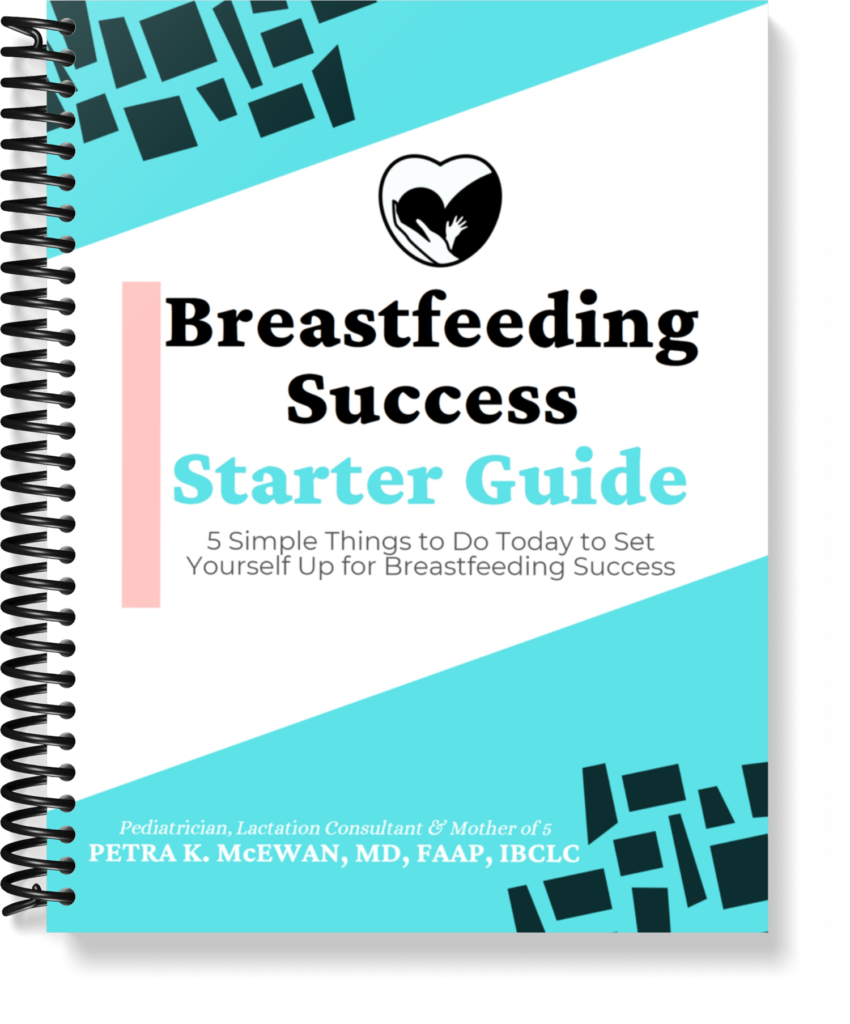Are you overwhelmed by the amount of breastfeeding products out there? If you aren’t now, you probably were at some point (or will be!). So many different things to choose from. You wonder what will meet your needs the best. And after you buy something, there’s still that FOMO (fear of missing out). You wonder if there’s something else out there that could meet your needs a little better.
You’ll likely need a breast pump if you’re breastfeeding and plan to return to work or be away from your baby for any extended period of time. And, boy, are there a TON of those out there, too!
Here, I’ll share with you a little info on breast pumps, and tips on choosing the best breast pump for you. (Bear in mind, the best breast pump for YOU may differ from your friends, or what you read about on the popular blogs).
Purpose of a breast pump
Before we get started on the different types of breast pumps, I want to make it clear why a breast pump is even necessary. Breast pumps are meant to remove milk from your breast in place of your baby. They can be useful if your baby is premature, in the NICU, or has trouble removing milk from your breast. You can then feed your baby the milk that you’ve pumped.
If you need to express milk for any reason, a breast pump is easier than using hand expression to remove the milk from your breast.
Types of breast pumps
Single vs double
Single breast pumps remove milk from just one breast at a time. A single breast pump is helpful for relieving engorgement in just one breast – especially in the early weeks of pumping. If your baby only feeds well from one breast you may find a single breast pump useful to pump the opposite side. These are best for occasional use, but can be a burden if you need to pump often.
Double breast pumps remove milk from both breasts at the same time. If you have to pump regularly, a double breast pump will help you save time (cuts pumping time in half). Research has also shown that your milk-producing hormones are stimulated better when you pump both breasts at the same time. And more hormone means more milk!
Hand vs Electric
Hand (or manual) pumps are usually single breast pumps. They require you to use your hand to make the pump work. Again, this type of pump is helpful for occasional use, usually to relieve engorgement. But, not for regular pumping. Hand pumps can only be used by one user, and not shared. The Medela Harmony and Haakaa Manual Pumps are my favorite in this category.
Electric pumps can be double or single. They require electricity (or battery power) to run.
Hospital-grade vs Personal use
Hospital-grade electric pumps are the most powerful breast pumps out there. They are usually the most effective at milk removal. Most hospitals have these pumps available for use after delivery, if your baby has any latching issues. Also, if your baby is in the NICU, you can use and/or rent a hospital-grade pump to keep your supply up while your baby is learning to feed.
Hospital-grade pumps can also be purchased, but have a high price-tag. This type of pump may be useful if you’re exclusively pumping or establishing a milk supply, but not if your baby is feeding normally at the breast. The downside to hospital-grade pumps is they’re bulky and not very portable. Hospital-grade pumps are the only pumps that can be used by multiple users, but each user must have their own kit. The Medela Symphony is my favorite in this category.
Personal use electric pumps are the most commonly used type of pump for working moms. They are typically portable and not as bulky as the hospital-grade pumps. They’re usually easy to use – once you get the hang of them! They are designed for one user only, and can’t be shared. The Medela Pump In Style is my favorite in this category, followed by the Spectra S2.
Things to look for in a breast pump:
Control
It’s best to choose a pump that allows you to control the amount of suction and the speed (how fast/slow it pumps). Most hospital-grade and electric pumps allow you to do this. Ideally, the pump should mimic what your baby does at the breast (fast sucks initially, then a slower rhythm once your milk lets down). Ideally, your pump suction should be adjustable up to 240mmHg (and no higher, since higher levels can damage breast tissue). It should also be able to cycle up to 50 times per minute.
Ability to travel
Think about where and how you’ll use and transport your pump. If you’ll be transporting your pump to and from work, you’ll want it to be portable and able to fit in a bag, purse or backpack. If your pump will be staying in one spot (i.e. in a pumping room or in one spot of your home), you may not have to worry as much about portability.
Power Source
A manual (hand) pump is helpful if you won’t have access to a power source, if you’re pumping on the go. If you’ll have access to an electrical outlet, an electric pump is a good idea, since it usually cuts your pumping time down. Many electric pumps can also be run on batteries if the power goes out.
Ability to clean
If you’ll be pumping several times a day, that also means you’ll need to clean your pump parts often. It’s recommended that pump parts are washed with soap and water after each us. You’ll want to be sure that your pump parts are easy to take apart and reassemble. If your pump has lots of small parts, it may be harder to put together, and also easier to lose the parts.
This is just a snippet of the things I feel are most important when choosing the best breast pump for you. If you’re looking for more help, check out the resources below.
More breast pump resources:
The CDC has helpful tips on keeping your breast pump parts safe and clean.
The FDA also shares helpful information on choosing and using a breast pump.
If you’re currently pumping, you may also find these articles helpful:
Best Breastfeeding and Pumping Hacks
Balancing Breastfeeding And Pumping
Looking for personalized help?
If you’re pumping and need help with coming up with a plan, or having any pumping/breastfeeding issues – I’d be happy to help. Take a peek at the different types of breastfeeding consultations I offer, and request an appointment when you’re ready. I’m here for you and all your breastfeeding/pumping needs!
And for more breastfeeding resources, join my subscribers and sign up for my e-mail newsletter below!
The form you have selected does not exist.
Do you have any other suggestions for choosing the best breast pump for you? I’d love to hear them! Just leave them in the comments below.
If you love these tips, be sure to check out my 75+ page digital library, filled with step-by-step instructions and the tools you need to learn the basics and adapt to life while breastfeeding, troubleshoot breastfeeding problems, go back to work while breastfeeding, wean – and so much more!





